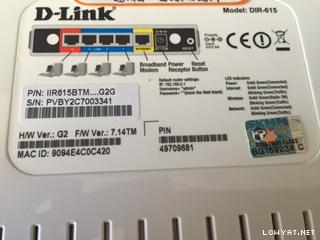Are you jaded searching for the top 5 best wireless router in the year 2014? If so, you don’t need to look any further since in the succeeding paragraph, you will learn more about the top 5 best wireless router for 2014. If you are one of those persons who are planning to purchase the latest wireless router, it is very important that you conduct your own research first to make sure that you will avail the elite wireless router in town.
In order to help you to carefully opt for the best wireless router, here are the top 5 best wireless router reviews for the year 2014.
1. Linksys EA6900 AC1900 802.11ac Wireless Router
At the first look, you will be amazed with its key features that include exceptional wireless performance, industry leading and user interface and elegant design. Linksys EA6900 AC1900 802.11ac Wireless Router has three packing external antennas with solid rock design and Turbo QAM. The so called Turbo QAM can be defined as the proprietary technology that has the ability to boosts the theoretical 802.11n speeds.
The maximum speed of the wireless router is about 450Mbps-600Mbps. It also has the potential to support the so called Smart WiFi platform cloud wherein it allows a certain user to control and remotely monitor the settings of the router with the use of smartphone, tablet and PC with internet. If you are searching for the fastest and greatest wireless router, Linksys EA6900 AC1900 802.11ac Wireless Router is the solution to your problem.
2. BT Home Hub 5
BT Home Hub 5 will offer you with its key features that include integrated modem of VDSL, 1 USB port with 2.0 and compact and neat design. It will also provide their users with exciting and latest features wherein they are considered as ISP routers. The exceptional design of BT Home Hub 5 is very different from Hub 4 since this product is one of the lightest and smallest routers that are available in the market today. It also has 3×3 antennas that are intended for 802.11n and 802.11ac. It also has the capacity to deliver better performance that you will surely love. Finally the BT Home Hub 5 will not disappoint you with your expectations and demands. Even though you are not their BT customer, you can still avail their product if you desire.
3. TRENDnet TEW-812DRU 802.11ac Wireless Router
The awesome features of TRENDnet TEW-812DRU 802.11ac Wireless Router include WP2, WPA, WPS security, 4x Ethernet Gigabit and mid and near range 802.11n excellent speeds. It comes with affordable prices that will match with your budget. It will also offer you with 3×2 array antennas that are responsible for delivering a short range of blazing performance.
When it comes to long distance performances, the TRENDnet TEW-812DRU 802.11ac Wireless Router is really fast yet cheap. You can really save budget when you decide to purchase this kind of wireless router. It is widely available in market today and rest assured that you will love its awesome key features.
4. Almond Securifi Router
It is considered as one of the elite routers under £100. Just like other routers, it will also offer you with its exciting key features like touchscreen display, wireless bridge and easy to follow set up settings. Almond Securifi Router is the first wireless router with touchscreen display and double wireless bridge. With the help of double bridge, you can easily connect to any Wi-Fi connection. The product will not require you to have installation disks since the setup setting is quite easy to follow. If you are looking for wireless router under £100, Almond Securifi Router is the best choice that you need to consider.
5. Asus DSL- N66U
The Asus DSL- N66U comes with unique key features such as 2.0 USB ports, AllCloud sharing and VDSL2 modem. If you are one of those individuals who are seeking for generation standard then Asus DSL- N66U is the elite performer for you to ponder on. With the help of VDSL2 modem, it will offer you with one time solution that only Asus DSL- N66U can do. It also has internal array antenna that is equipped with AiCloud functionality. This feature will allow a certain user to share their media from USB storage. Asus DSL- N66U is considered as one of the greatest DSL routers that you can buy at a reasonable cost.
The top 5 best wireless router for 2014 that are mentioned above must be your top priority especially when you are planning to purchase your own wireless router. An apparent and better understanding about the said matter is highly recommended to make sure that you carefully choose the elite wireless router that you are looking for. If you want to have additional information about the top 5 best wireless router 2014, just feel free to browse the web and rest assured that you will find your desired wireless router.





















